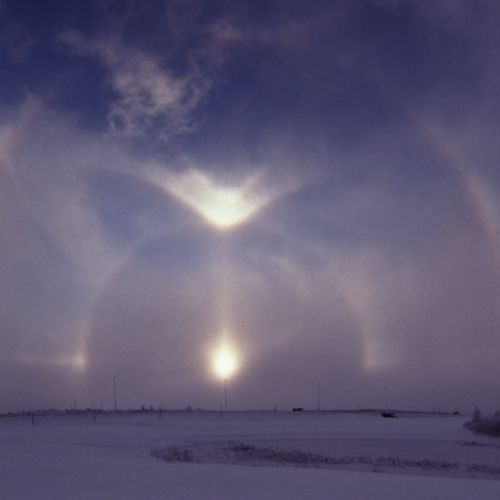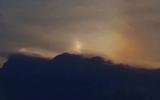| ID | #1705233783 |
| Added | Sun, 14/01/2024 |
| Author | July N. |
| Sources | |
| Phenomena | |
| Status | Result
|
| Resume |
Initial data
"Crown Flashing" is an alternative angle of a previously illuminated flash. It dates back to April 2018 and was recorded near Independence, Missouri. What is unusual here is that there is a solar dog next to the flash.
Original news
Creativation
"Crown Flashing Capture", this is an alternate angle of a previously covered crown flash posted in this subreddit. This dates back to April, 2018 and was recorded near Independence, Missouri. What is unusual here is that there is a sun dog adjoining the flash.
________________
Until this capture I had never seen this strange light anomaly in person. When I spotted these dancing on the cloud tops, I asked my brother, who was driving at the time, to please pull over immediately. He thought I was trippin for a second, until he spotted them himself. A crazy moment from back in April, 2018.
Hypotheses
Halo

Halo usually appears around the Sun or moon, sometimes around other powerful light sources such as street lights. There are many types of halos, but they are mostly caused by ice crystals in Cirrus clouds at a height of 5-10 km in the upper troposphere. The form of the observed halo depends on the shape and arrangement of crystals. Reflected and refracted by the ice crystals, the light often turns into a spectrum, which makes halo look like a rainbow, but a halo in low light has a low chroma, which is associated with the peculiarities of twilight vision.
Investigation
This is a phenomenon they callThe Crown flash. This is a rare optical effect caused by the alignment of ice crystals. Ice crystals are affected by electric fields around the cloud, and they reflect or refract sunlight in different directions. When the electric fields change due to lightning or other factors, the ice crystals also change their orientation, creating the appearance of flashing or dancing light.
Resume
Halo

Halo usually appears around the Sun or moon, sometimes around other powerful light sources such as street lights. There are many types of halos, but they are mostly caused by ice crystals in Cirrus clouds at a height of 5-10 km in the upper troposphere. The form of the observed halo depends on the shape and arrangement of crystals. Reflected and refracted by the ice crystals, the light often turns into a spectrum, which makes halo look like a rainbow, but a halo in low light has a low chroma, which is associated with the peculiarities of twilight vision.
Similar facts
Log in or register to post comments




